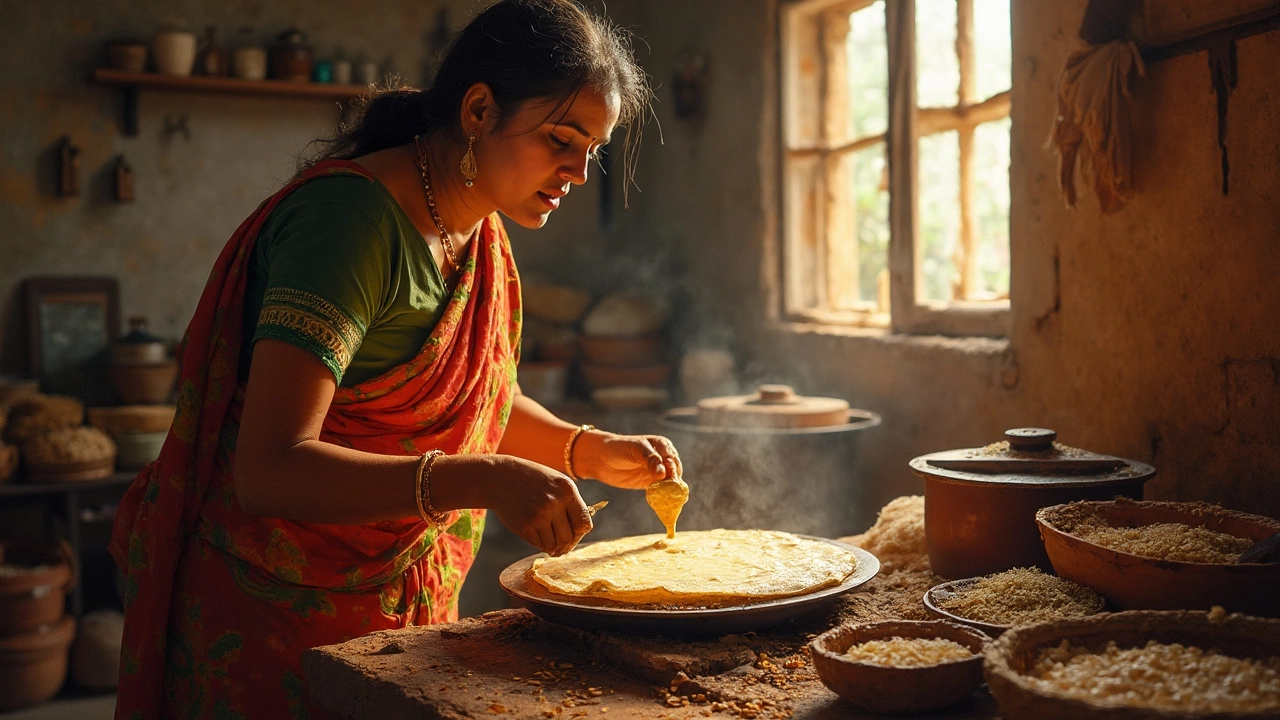Ferment without yeast: Natural Leavening Tips for Indian Breads & Batters
When you hear Ferment without yeast, a technique that uses natural bacteria and acids instead of commercial yeast to leaven batter or dough. Also known as yeast‑free fermentation, it lets you achieve airy results with pantry staples.
The process often starts with dosa batter, a fermented mix of rice and lentils popular in South India. Adding curd, a source of lactic acid bacteria that speeds up natural fermentation creates the acidic environment needed for a good rise. In a pinch, a pinch of baking soda, a chemical leavener that produces carbon dioxide when combined with acid can mimic the bubbles you’d get from a long fermentation, giving you a quick, yeast‑free boost.
Why go yeast‑free?
Ferment without yeast isn’t just a novelty; it’s a flexible tool for anyone who wants lower‑cost, lower‑allergen leavening. The central idea is that natural microbes (lactic acid bacteria) or acid‑base reactions (curd + baking soda) generate the gas that lifts batter. This means you can skip store‑bought yeast, avoid gluten‑related sensitivities, and still enjoy fluffy rotis, soft dosas, or light idlis. The technique also works year‑round, because you control temperature and timing instead of relying on yeast’s sweet spot.
In practice, you’ll see three common patterns across Indian recipes. First, a long soak of rice and lentils creates a starter culture that ferments on its own—think classic dosa batter that sits overnight. Second, a dollop of curd added to the batter shortens the wait to 4‑6 hours, because the lactic acid bacteria kick in faster. Third, a tiny amount of baking soda combined with a splash of lemon juice or yogurt gives an instant lift, perfect for busy mornings. Each pattern ties back to the same principle: produce carbon dioxide without yeast.
Understanding these patterns helps you choose the right method for the dish you’re planning. Want a traditional South Indian breakfast? Let your dosa batter ferment slowly for deep flavor. Need a quick snack? Mix a spoonful of curd or a pinch of baking soda into the batter and cook within an hour. No matter which route you take, the result is a light, airy texture that rivals yeast‑based breads.
Below you’ll find a curated selection of articles that dive deeper into the science, share step‑by‑step recipes, and troubleshoot common pitfalls. Whether you’re a beginner curious about starter cultures or an experienced cook looking to speed up your process, the resources here will give you the confidence to master fermenting without yeast.

Quickly Ferment Dosa Batter Without Yeast
Mastering the art of dosa involves perfecting the batter, especially without using yeast. This article delves into practical tips for fermenting dosa batter in record time, embracing natural methods without compromising taste. Discover the importance of temperature, ingredient proportions, and useful hacks to achieve a well-fermented batter for those crispy, golden dosas. Explore how a warm environment can speed up fermentation, making it efficient even in colder climates.